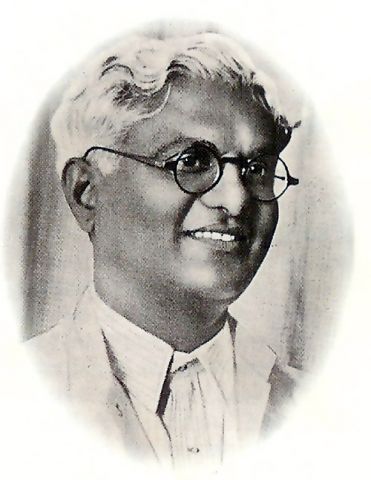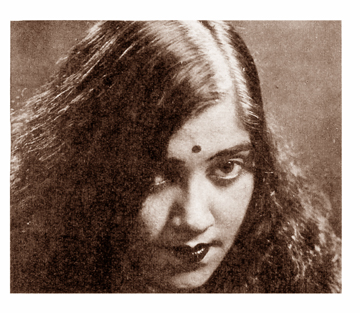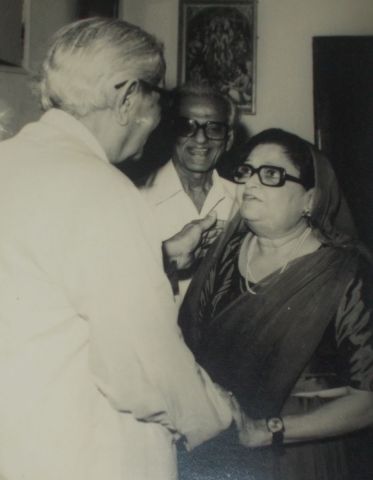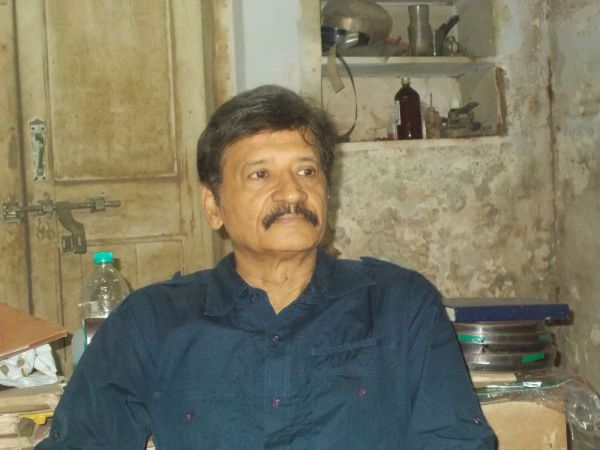‘Bigger than Sky’ – Ranjit Studio
18 Apr, 2020 | Beete Hue Din by Shishir Krishna Sharma
With the outset of talkie films with Alam Ara in the year 1931, Lahore, Kolkata, Pune and Kolhapur emerged fast as the centres of film production. Among leading companies of that time like Pune's Prabhat Film Company, Kolhapur's Jayaprabha Studio and Prafull Pictures, Kolkata's New Theatres and Madan Theatres, Lahore's Pancholi Arts and Mumbai's Bombay Talkies and Wadia Movietone, Mumbai's Ranjit had a shining name for it was said that there are more stars in Ranjit than the sky. The reason was that Ranjit Studio, at that time had more than 700 artistes and technicians on its payroll, a huge number which eventually forced the government to open a ration shop inside Ranjit Studio. Ranjit Film Company not only gave star status and a huge fan following to actors like Madhuri,Sulochana (Ruby Myers), Billimoria brothers,Ishwarlal, Charlie, Dixit, Ghori, Khurshid and Motilal, composers like Ustad Jhande Khan, Gyan Dutt, Bulo C.Rani and directors like Jayant Desai, Nanubhai Vakil, Chaturbhuj Doshi, Manilal Vyas, Dina Nath Madhok and Nandlal Jaswantlal but also gave refuge to the stalwarts like Kidar Sharma, Leela Desai, Kundan Lal Saigal, Khurshid, Bipin Gupta and Khemchand Prakash, after they shifted base to Mumbai from Kolkata during the Second World War. Even artistes like Trilok Kapoor, Prithviraj Kapoor and Kalyani Bai had also long back shifted from Kolkata to Mumbai on call from Ranjit Studio only.
Ranjit Studio was founded in the year 1929 by Sardar Chandulal Shah who was originally from Jamnagar (Gujrat). A few years back in a meeting, Chandulal Shah's son Navin Shah said that his father came to Mumbai in the early 1920s for cotton trading and started working in Bombay Stock Exchange. His entry into films happened just by chance when he was offered the direction of Laxmi Film Companys film Vimla (1925). The main lead of this film was Raja Sandow and Putli. In the same year i.e. 1925, Chandulal Shah directed Laxmi Film Companys another film Panchdanda which also had Raja Sandow and Putli in the main lead. After directing Madhav Kam Kundala of the same banner in 1926, Chandulal Shah got chance to co-direct Kohinoor Film Company's filmTypist Girl in association with G.S.Devare. The biggest hit of the year 1926, Typist Girl in the main lead had Sulochana (Ruby Myers), Raja Sandow and R.N. Vaidya along with Gauharjaan Mamajiwala who hailed from a Bohri Muslim family from Saurashtra. After Typist Girl, Chandulal Shah directed Kohinoor Film Company's Educated Wife, Gunsundari, Sati Madri, Sumari of Sindh (all 1927) and Jagdish Film Company's Grihalakshmi, Vishwamohini (both 1928) and Chandramukhi (1929) which all had Gauhar in the main lead. In the year 1929, in partnership with Gauhar, he founded Ranjit Studio at Dadar (East). As per Navin Shah, Chandulal Shah gave this name to the Studio as a tribute to the then Maharaja of Jamnagar and renowned Cricketer Ranjit Singh who had also monetarily helped him to set up the Studio.

Sardar Chandulal Shah. Image Courtesy: Beete Hue Din
In 3 years from 1929 to 1931, a total of 31 silent films were produced under the banner of Ranjit Film Company. These films were, Bhikharan, Fairy of Sinhaldweep, Pati-Patni, RajputaniRajputani (all 1929), Beloved Rogue, Desh Deepak, Divine Dowry, Jawan Mard, Love Angle, My Darling, Noor-e-Watan, Outlaw Of Sorath, Ranak Devi, Rasili Radha, Sheikh Chilli, The Tigress, Wild Flower (all 1930),Bombay The Mysterious, Desert Damsel,Drums of Love, Hoor-e-Roshan, Love Birds, Gwalan, Ghoonghatwali, Banke Sanwaria, Noor-e-Alam, Vijay Lakshmi, Vilasi Atma, Baghdad Nu Bulbul and Qatil Katari (all 1931). All the artistes i.e. Gauhar, Putli, Sultana, Shanta Kumari, Madhuri, Zubeida, Raja Sandow, Billimoria Brothers, Inamdar, Babu Rao and Ishwarlal who acted in these films were known faces of the silent era of Indian Cinema. These films, made under the banner of Ranjit Film Company were directed by Chandulal Shah, Nanubhai Vakil, Jayant Desai, Nandlal Jaswantlal and Nagendra Majumdar. Since there was a trend to release silent films with different titles in different parts of the country in accordance with the particular language spoken in that particular part, it is now very difficult to keep a proper record of all the silent films made in that era.
With the outset of talkie films, Ranjit Film Company's name was changed to Ranjit Movietone. First talkie film made under the banner of Ranjit Movietone was Devi Devyani (1931), with Gauharjaan Mamajiwala, D. Billimoria, Keki Adajania, Master Bhagwan Das and Miss Kamla in the main lead. This film was directed by Chandulal Shah and the composer was Ustad Jhande Khan who composed music for all initial 13 talkie films made between 1931 to 1933 under the banner of Ranjit Movietone. These films were, Devi Devyani (1931), Bhutia Mahal, Char Chakram, Do Badmash, Radha Rani, Shail Bala, Sati Savitri (all 1932), Bhola Shikar, Bhool Bhulaiya, Krishna Sudama, Miss 1933,Pardesi Preetam and Vishwa Mohini (all 1933). This was the same Ustad Jhande Khan whom composer Naushad started his career as an assistant in late 1930s.

Gauharjaan. Image Courtesy: Beete Hue Din
The pace of the film production in Ranjit Movietone is proven by the fact that an average of 6 films per year were being made under this banner. Including the films Gunsundari, Sitamgar (1934), Toofan Mail (1934),Veer Babruwahan (1934), College Girl (1935), Desh Dasi (1935), Noor-e-Watan, Raat Ki Rani (1935), Jwalamukhi (1936), Lehri Lala (1936), Raj Ramani (1936), Dilfarosh (1937), Pardesi Pankhi (1937), Shama Parwana (1937), Toofani Toli (1937), Baazigar (1938), Gorakh Aya (1938), Prithvi Putra (1938), Secretary (1938), Adhuri Kahani (1939), Thokar (1939), Aaj Ka Hindustan (1940),Diwali (1940), Holi (1940), Pagal (1940) and Achhut made between 1934 to 1940, total 61 films were produced by Ranjit Movietone in the decade of 1930s. Sant Tulsidas, a 1939 release was bilingual which was made in the Marathi language as well. There is a reference of a Tamil language film Seetha-Apaharanam made under this banner in 1938, but there is no other source found to crosscheck and confirm this fact. Year 1940 release Achhut was Gauharjaan's last film as an actress after which she got completely busy with looking after the management of the banner and the studio. Chandulal Shah also refrained himself from directing any new movie for the next 14 years.
The year 1940 release Achhut was Gauharjaan's last film as an actress after which she got completely busy with looking after the management of the banner and the studio. Chandulal Shah also refrained himself from directing any new movie for the next 14 years.
When composer Khemchand Prakash who started career in New Theatres Kolkata, shifted base to Mumbai in late 1930s, he, after composing music for 2 films of Supreme Pictures, got associated with Ranjit Movietone in 1940. During 1940 to 1945 he composed music for total 20 films of this banner viz Aaj Ka Hindustan, Holi, Diwali, Pagal (all 1940), Pardesi, Shadi, Umeed (all 1941),Chandni, Dukh Sukh, Fariyad, Iqrar, Mehmaan (all 1942), Gauri, Tansen, Vish Kanya (all 1943), Bhanwara, Mumtaz Mahal , Shahenshah Babar (all 1944), Dhanna Bhagat and Prabhu Ka Ghar (all 1945). Composer Gyan Dutt also started career with Ranjit Movietone with his debut movie Toofani Toli (1937). Later on, he composed music for 24 more films of this banner including 15 films made between 1937 to 1940 along with Beti, Dhandora, Sasural (all 1941), Arman, Bhakt Surdas, Dhiraj (all 1942), Andhera,Bansari, Nurse and Shankar Parvati (all 1943).
Composer Bulo C.Rani, also started career as independent composer with Ranjit Movietones Pagli Duniya (1944). He had earlier composed 2 songs for Amar Pictures 1943 release Paigham whose main composer was Gyan Dutt, Including Pagli Duniya, he composed music for total 20 films of this banner viz Caravan(1944), Chand Chakori, Moorti and with Khemchand Prakash - Prabhu ka Ghar (all 1945), Dharti, Rajputani (both 1946), Bela, Kaun Hamara, Piya Ghar Aja, Woh Zamana and with Hansraj Behl - Lakhon Mein Ek(all 1947), Bichhade Balam, Jai Hanuman (1948) and with Hansraj Bahal - Mitti ke Khilone (all 1948), Bhool Bhulaiya, Gharibi, Nazaare (all 1949), Jogan(1950) and Aurat Teri Yahi Kahani (1954).
In the 1940s, a total of 50 films were made under the banner of Ranjit Movietone. Writer-Director Kidar Sharma who had shifted from Kolkata, started his career in Mumbai with Ranjit Movietone's Arman (1942). Same way Singer-Actor Kundan Lal Saigal's first movie in Mumbai was Bhakt Surdas(1942) of the same banner. Saigal's well appreciated movies Tansen (1943) and Bhanwara (1944) were also produced by Ranjit Movietone. Chandulal Shah's nephew i.e. his sister's son and close aide Producer-Director Ratibhai Punatar's son Jairaj says that those were the golden days of Ranjit Movietone. Every second film of this banner was a runaway hit. Chandulal Shah, who was fond of speculations in the share market and was equally passionate about Horse Racing, was successful in whichever trade he ventured into. Even his favourite horses Balam and Chakori were definite winners in all races. His success in every field had taken his self-confidence to such heights that he had started enjoying taking big risks.

Sohrab Modi, Ratibhai Punatar with Gauharjaan. Image Courtesy: Beete Hue Din
In mid-1940s, Ranjit Studio suddenly saw its downfall when Chandulal Shah lost huge sum of Rupees 1 crores 25 lacs in a single day, in speculations in cotton trading. According to Jairaj, this mishap took place in the year 1944. Since all the efforts to control the deteriorating circumstances failed and there remained no other option, all the real estate of Ranjit Studios, as well as Gauharjaan, owned multistoried building situated near Opera House was mortgaged in the year 1950 to Asian Insurance Company (now Life Insurance Corporation Of India). And this property could never be got released. Still, production of films under the banner of Ranjit Movietone like Bedardi, Hum Log(both 1951), Bahadur, Footpath, Paapi (all 1953), Aurat Teri Yehi Kahani, Dhobi Doctor (both 1954), Zameen Ke Taare (1960) was continued. Chandulal Shah also tried his hand into direction once again after 14 years with the film Paapi which was Raj Kapoor's careers the only film with his double role in it. But all the efforts turned futile and Akeli Mat Jaiyo(1963) proved to be the last film of Ranjit Movietone.
According to Jairaj, in the year 1965 another Raj Kapoor and Vyjayanthimala starrer film Bahurupiya was started. One song of this film, composed by Shankar Jaikishan had also been posturized but this film got shelved. Chandulal Shah, who was given the title of Sardar by renowned film journalist Baburao Patel died in the year 1975 and Gauharjaan Mamajiwala died in 1984.

An image of Jairaj Bhai Punatar. Image Courtesy: Beete Hue Din
Jairaj says that after the film production in Ranjit Movietone ceased, United Technicians, a group of 7 technicians who were employed with the Studio for many years, took control of Ranjit Studio. This group, comprising of Vasant Rao Bua, Shah Bhai, Mohan Bhai, Hasmukh Bhai Mistry, Wahab Bhai, Kapoor Sahab and Madhav Rao started letting studio floors to outside producers for shootings to meet out day to day studio expenses. And finally in the year 1984 the whole mortgaged property was brought to the hammer by the Insurance Company.
Chandulal Shah also tried his hand into direction once again after 14 years with the film Paapi which was Raj Kapoor's careers the only film with his double role in it.
Today, ownership of Ranjit Studio which is situated on Dada Sahab Phalke Marg of central Mumbai's Dadar (East) is with Mumbai's well-known builder Mr.N.L.Mehta. If leave apart as an exception the offices of producer N.C.Sippy's and Mr. Jairaj Punatar who is in the business of retrieving negatives and prints of bygone eras long-forgotten films, Ranjit Studio's connection with cinema is completely severed now. Today, dozens of offices of Non-Film Companies and textile factories are operating from here.
During the years 1929 to 1963, total 31 silent, 1 Tamil, 1 Marathi and 120 Hindi films were made under the banners of Ranjit Film Company and Ranjit Movietone. According to Jairaj out of these 153, only 7 films viz Tansen, Jogan, Hum Log, Paapi, Footpath, Zameen ke Taare and Akeli Mat Jaiyo are available today as negatives of all rest of the films have long back destroyed in a fire. This is the reason why the names of all these films seem as unheard of.

The almost destroyed Ranjit Logo. Image Courtesy: Beete Hue Din
Though Ranjit Movietone has become a part of the history, yet its name on the main entrance of Studio and the almost destroyed Logo, the Horse rider holding a dagger in one hand, embossed on one of the walls inside, are enough to remind us of the glorious era of Ranjit though the logo has now vanished behind the signboards of a music school and a non-film distribution Company. Even a small Logo made of brass which was fixed on the wooden door of Jairajs office until a few months back has come out and is now lying in his office almirah. This is the same office where at one time Sardar Chandulal Shah and Ratibhai Punatar used to sit. Though, Sardar Chandulal Shahs son Navin Shah doesn't want to talk about Ranjit today, Ratibhai Punatars son Jairaj is still trying hard to gather up all the golden memories associated with this great name.
(Part of Shishir Krishna Sharma's Beete Hue Din blog series)
204 views







.jpg)


